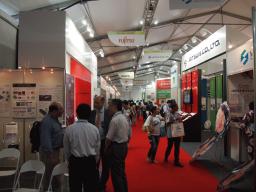23/06/2012
The United Nations Conference on Sustainable Development (Rio+20)
The United Nations Conference on Sustainable Development, Rio+20, was held in Rio de Janeiro, Brazil, on June 20-22, 2012. In addition to the 98 heads of state and cabinet members from the 188 UN member states and the 3 observer countries, 40,000 people such as government officials, local governments, firms and NPOs participated in the conference.Foreign Minister Koichiro Gemba also joined the conference as a representative of Japan.
The Rio+20 was held as a follow-up conference of the “Earth Summit” also held in Rio de Janeiro in 1992 in conjunction with its 20th anniversary. At the Earth Summit 1992, “Rio Declaration on Environment and Development” was made, and “Agenda 21”, an action plan to realize the Rio Declaration was adopted. Moreover, two important legally binding agreements, Framework Convention on Climate Change and Convention on Biological Diversity were opened for signature. The Earth Summit has largely been influential to the direction of the global environment protection.
 “A green economy in the context of sustainable development and poverty eradication” and “Institutional framework for sustainable development” were the key conference themes of the Rio+20. Along with the confirmation of the political commitment to the two themes, importance to achieve the Millennium Development Goals (MDGs), awareness about the human role in the sustainable development, and all other principles and commitments of the conference were discussed, and developed to the outcome document entitled “The Future We Want” which was adopted on the final day of the conference.
“A green economy in the context of sustainable development and poverty eradication” and “Institutional framework for sustainable development” were the key conference themes of the Rio+20. Along with the confirmation of the political commitment to the two themes, importance to achieve the Millennium Development Goals (MDGs), awareness about the human role in the sustainable development, and all other principles and commitments of the conference were discussed, and developed to the outcome document entitled “The Future We Want” which was adopted on the final day of the conference.
The Japanese Government announced the implementation of the “Green Future” initiative from the perspective of “Human Security.” The purposes of the “Green Future” are to (1) disseminate the future environment cities to the world, (2) shift to the global green economy, and (3) establish a strong and firm society.
In conjunction with the Rio+20, the Japanese Government established a pavilion on “Green Innovation in Japan, Power for Recovery and Emotional Ties with the World”, and introduced fine environmental and energy saving technologies. Moreover, the government carried a strong message about making a disaster durable society based on the experiences in the Great East Japan Earthquake.
The pavilion consisted of the following 6 areas, and the 38 organizations joined.
○Lessons learned from the Great East Japan Earthquake
○Research, Observation and Human Development
○Sustainable Use of Nature Capital
○Future Environment Cities
○Environmental Technologies
○Contributions to the World











